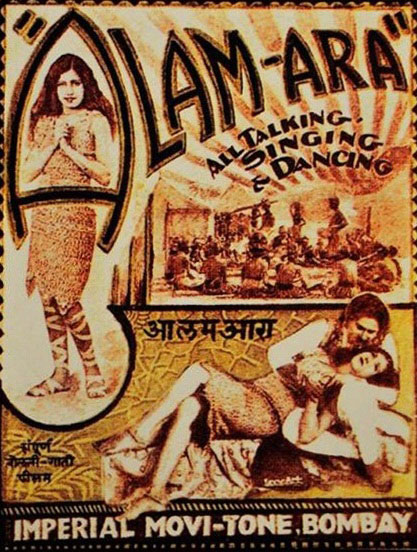In 2014, I received a phone call from Gulzarsaheb. He had been awarded the Dadasaheb Phalke award and the government wanted to screen a retrospective of his films at the International Film Festival of India in Goa. But it couldn’t find a print of his acclaimed film, Maachis. This was a film less than 20 years old; yet it seemed to have vanished. This is just the tip of the iceberg in the tragic story of the colossal loss of India’s film heritage.
Yet I am often asked whether films need to be saved at all — with a million versions available across so many media, surely films will survive in some form or the other. My standard answer is that with millions of copies of van Gogh’s Sunflowers available on everything — from postcards to mouse pads to screen savers — is the original and the acres of museum space devoted to preserving the paintings necessary? And that’s where the root of the problem lies for films in India.
When we talk about films in India, the immediate association is business and mass entertainment. We see the commerce but fail to see the art. But what about the documentaries, experimental films, short films, newsreels, television series, home movies, that make up the fabric of our film heritage?
We tend to forget that the moving image was one of the greatest innovations of the 20th century, changing our perception of the world and giving us the ability to capture a reflection of ourselves and the times we lived in. About 1,700 silent films were made in India of which the National Film Archive of India has only 5 to 6 complete films and about 20-25 films in fragments. The film industry in Madras made 124 films and 38 documentaries in the silent era. Only one film survives. By 1950, India had lost 70-80 per cent of its films.
How is it that we have been so cavalier about our rich audiovisual heritage? A few years ago, I had gone to a slum, Pathanwadi, in the suburbs of Mumbai — accompanied by my guide, Bipin ‘Silver’ — the place where films go to die. Bipin Silver has earned his name from his choice of livelihood: extracting silver from black-and-white films. In a darkened room piled high with 16 mm and 35 mm film cans, I watched a thin old man systematically strip these films bare of silver, leaving ghostly, translucent white strips of nothing scattered on the floor. Bipin says he strips 1,000 kgs of film in one go; he has been doing this for the last 40 years.
Much of the work of our pioneering film-makers shot on cellulose nitrate fell prey to silver extraction, including our first sound film, Alam Ara (1931). Cellulose nitrate was also highly flammable and many films were lost in nitrate fires, sometimes even during projection. During the Second World War, a major fire took place at B.N. Sircar’s New Theatres studio in Calcutta resulting in the loss of many original negatives of the classics New Theatres films made in the 1930s.

Much of the work of our pioneering film-makers shot on cellulose nitrate fell prey to silver extraction, including our first sound film, 'Alam Ara' (1931) (Wikimedia Commons)
But even with the introduction of the more stable cellulose acetate, photochemical film remains a fragile medium prone to decay and deterioration, leading to the ‘vinegar syndrome’ characterized by shrinkage, brittleness and buckling of the emulsion as well as a pungent smell of vinegar if not stored in temperature and humidity-controlled environments. Unfortunately, India’s film industries grew in Bombay, Calcutta and Madras where the weather was far from conducive for the longevity of film. For many Indian producers, storage meant depositing the film in a lab or dumping cans in warehouses at the mercy of heat, humidity and dust. If a film was not successful, the producers would stop paying the lab the deposit fee, resulting in the cans being dispatched to old warehouses to rot.
But all is not lost. Film preservation is a treasure hunt where we live in the hope that we will find a lost Indian film in a cupboard, a flea market or an old cinema. A few years ago, a print of the silent film, Bilwamangal (1919), was discovered at the Cinémathèque Française in Paris.
The advent of television in India in the 1970s saw the introduction of U-matic tape and, later, Betacam. Producers enthusiastically transferred their films to the new formats and discarded their original negatives, drawn to what they thought was a cheaper and more convenient option for storage. What they did not realize was that video lacked the longevity of celluloid, and was also poorer in image quality. The damage was done: in the absence of original camera negatives, inferior copies from the 1980s are being used till date as source material by Indian DVD and VCD companies for their releases.
Today the industry is turning its back on celluloid in a definite drift towards digital technology, reinforcing the belief that the original camera negative is an obsolete artefact. We are ignoring the fact that celluloid is the only proven archival medium with a lifespan of a century, while the longevity of digital formats remains untested as the data requires constant migration to newer formats with rapidly changing technology.
As per the statistics from the censor board, in 2016-17, we produced 1,986 feature-length films in 45 languages. Yet we have an abysmal record of film preservation, having managed to preserve a minuscule proportion of our heritage that is over a century old.
Film preservation will have to be taken up on a war footing to tackle this monumental challenge. Each film-making state should have its own film archive for both celluloid and digital films. Given the lack of trained film archivists, there is an urgent need to focus on training in this specialized area. To address this, Film Heritage Foundation has been conducting intensive film preservation training workshops around the country since 2015 and has introduced 200 individuals to the field with the aim of creating a local resource of archivists and developing film archiving as a viable career opportunity.
India has a singular cinematic legacy that is endangered. What is lost, we need to find; what we have, we need to restore; what we create now, we need to preserve for tomorrow.












